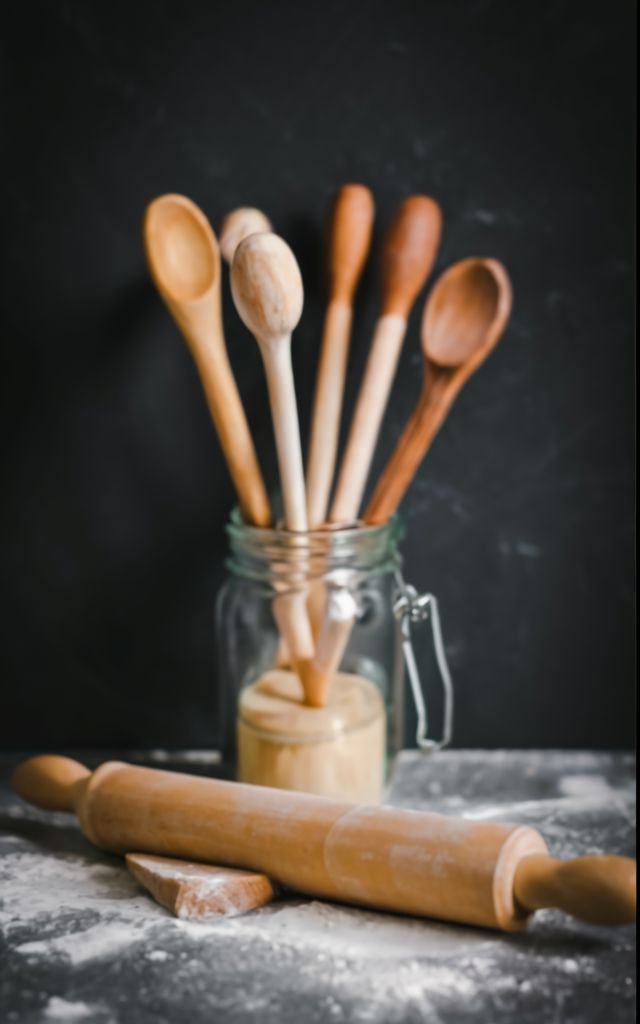Artisanal Hand-Carved Wooden Rolling Pins: A Baker’s Delight
Crafting Exquisite Hand-Carved Wooden Rolling Pins: An Epicurean’s Dream
Introduction
In culinary craftsmanship, every kitchen implement bears significance, yet few possess the enduring allure of hand-carved wooden rolling pins. These culinary marvels not only serve as indispensable baking tools but also as enduring symbols of artisanal mastery and age-old tradition. In this all-encompassing guide, we embark on a journey to unravel the artistry behind the creation of hand-carved wooden rolling pins, from meticulously selecting the finest timber to honing intricate carving techniques and elevating their durability and aesthetics.
The Artistry Embedded in Wooden Rolling Pins
Exploration of Carving Techniques
The venerable art of hand-carving wooden rolling pins draws inspiration from centuries-old woodworking traditions, where seasoned artisans wield their expertise to fashion raw timber into functional masterpieces. Each rolling pin is a testament to the craftsman’s prowess, showcasing elaborate detailing and meticulous precision in carving techniques.
Initiating the process, artisans meticulously handpick premium hardwoods such as Maple, cherry, and walnut, prized for their robustness and flexibility. Subsequently, the wood undergoes a metamorphosis as artisans deftly mould and sculpt it using an array of handcrafted implements, encompassing carving knives, chisels, and gouges. From understated, graceful designs to intricate motifs and patterns, the realm of customization knows no bounds.

Commencement of Crafting Wooden Rolling Pins
Fashioning wooden rolling pins unfolds as a labour of love, seamlessly blending pragmatism with artistic expression. Unlike their mass-produced counterparts, hand-carved rolling pins bear the indelible marks of their creators, imbued with an aura of authenticity and individuality.
For fans of the culinary arts, possessing a hand-carved wooden rolling pin transcends mere utility—it embodies a profound connection to heritage and artisanship. With every deft roll of dough, bakers are transported to a realm where artisanal skill and unwavering dedication converge to craft cherished kitchen companions.
A Stepwise Guide to Crafting Wooden Rolling Pins
Preluding the Wood for Carving
The odyssey of crafting a wooden rolling pin commences with the meticulous selection of a pristine wood blank. Esteemed hardwoods such as Maple and cherry reign supreme, owing to their resilience and silky-smooth texture, providing an ideal canvas for the artisan’s craft.
Once the chosen wood blank is procured, it undergoes a reasonable process of sizing and shaping, meticulously executed with the precision of a seasoned artisan. Subsequently, the desired dimensions for the rolling pin are meticulously demarcated on the wooden surface, serving as a guiding beacon for the ensuing carving endeavour.
Crafting and Contouring the Rolling Pins
Armed with prepared wood, artisans sculpt and shape the rolling pin’s form and essence. Whether fashioning a classic French-style pin or a tapered design for precision rolling, each tool stroke is executed with purpose and finesse.
At this juncture, artisans devote meticulous attention to detail, endeavouring to craft seamless curves and crisp contours. From elaborate floral embellishments to geometric marvels, the artistic realm of carving burgeons has limitless possibilities.
Refining and Polishing Techniques
Following carving endeavours, the rolling pin undergoes a rigorous sanding regimen to achieve a lustrous, polished finish. Commencing with coarse-grit sandpaper and progressing to finer variants, artisans painstakingly eradicate any vestiges of roughness or imperfection, unveiling a surface akin to satin.
Artisans employ food-grade finishes such as mineral oil or beeswax to safeguard the wood’s integrity and accentuate its innate splendour. These treatments fortify the wood against moisture and abrasion and bestow upon it a radiant sheen, epitomizing natural allure.
Picking the Optimal Wood for Rolling Pins
Premier Wood Varieties for Hand-Carved Rolling Pins
When contemplating wood selection for hand-carved rolling pins, factors of durability and aesthetics reign supreme. Renowned for its resilient constitution and uniform grain, Maple is a perennial favourite among artisans. Cherry, characterized by its inviting hues and sporadic knots, imparts a rustic allure to culinary realms. Meanwhile, walnut lends an air of sophistication to rolling pin creations with its abundant ebony grain.
Deliberations on Durability and Aesthetics
In addition to wood type, artisans undertake deliberations on grain patterns and colour palettes when selecting materials for rolling pins. The uniform grain of Maple begets a sleek, contemporary aesthetic, whereas cherry’s innate variances bestow upon its character and depth. The rich, mahogany walnut hues serve as an irresistible allure for connoisseurs seeking a dramatic statement piece.

Augmenting Aesthetics and Durability
Finishing Stratagems for Wooden Rolling Pins
Artisans deploy an array of finishing techniques to heighten both the visual appeal and longevity of hand-carved rolling pins. Food-safe oils and waxes emerge as stalwart allies, fortifying the wood against moisture incursion and wear while accentuating its innate beauty. These treatments imbue the wood with a resilient shield, ensuring enduring protection sans compromise to its inherent allure.
Sealing and Safeguarding the Wood
Artisans may seal the wood with a protective barrier, fortifying it against environmental vicissitudes in tandem with finishing regimens. This supplementary layer of safeguarding serves as a bulwark against warping, fissuring, and discolouration, ensuring that the rolling pin remains an enduring emblem of culinary heritage for generations to come.
Comparative Analysis of Wood Types for Rolling Pins Wood Variety Grain Presentation Durability and Suitability for Rolling Pins Maple Uniform, refined Exceptionally durable, optimal for frequent utilization Cherry Warm hues, sporadic knots Moderately durable, imbues rustic charm Walnut Luxuriant, ebony grain Exemplary durability, evokes sophistication.
Closure
In summation, artisanal hand-carved wooden rolling pins transcend their practical function, emerging as veritable emblems of artistry and legacy. From the judicious selection of timber to the mastery of carving techniques and the enhancement of durability and aesthetics, fashioning these culinary marvels represents an ode to craftsmanship and dedication. Whether you’re a seasoned pastry chef or an enthusiastic amateur, consider adorning your kitchen cabinets arsenal with a hand-carved wooden rolling pin and savour the joy of culinary creation with unparalleled artisanal delight.